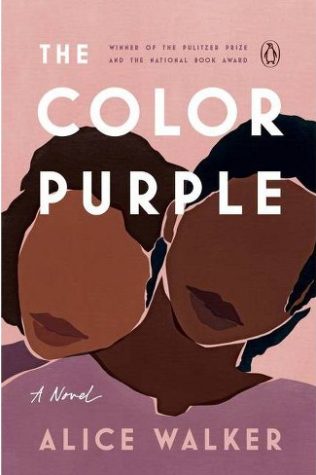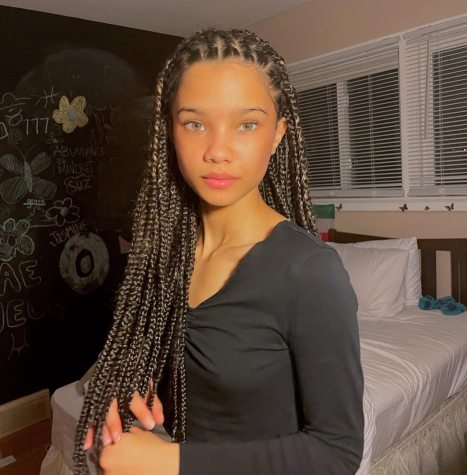“The Color Purple”; honoring Black female authors during Women’s History Month
“I’m poor, Black, I may even be ugly, but dear God, I’m here! I’m here!” – Alice Walker, The Color Purple

It’s been over 40 years since Alice Walker’s Pulitzer Prize-winning 1982 novel The Color Purple was published and over 30 years since it hit theaters. The story introduced us to Celie Johnson (Whoopi Goldberg), a poor, illiterate Black woman with a traumatizing past. It is about Celie’s journey to achieving an identity of her own–morally, physically, and sexually.
During Women’s History Month, I want to take the time to recognize the powerful works of literature that have been published by Black women. Too often we fail to give credit to the writers who have courageously used their voices to cause a ripple effect on discourse and dialogue through words. Many of these women have worked to create and push their theories of feminism, womanhood and social justice through their creations. The power of language has led us through generations of revolution: novels, poems and essays have transformed humanity.
The Color Purple is unique because it is the only Pulitzer-winning novel to feature a lesbian protagonist and also be written by a woman. This novel tackles the issues many Black women faced in the 20th century, including racism, sexism, domestic violence, incest, rape, pedophilia and more.
Celie has suffered extreme psychological trauma through abuse by the men in her life. This causes Celie to view herself as worthless and powerless, believing the fear she felt toward men was a natural part of life. Albert, her husband, is in love with the fierce and independent blues singer Shug Avery, therefore Celie is merely a servant and occasional sexual convenience. But her experiences with abuse are not the focus of the story; instead, it is on her recovery and the relationships built with other women as a result. What Celie is missing in her life is a strong, Black female role model. It is not until she is reunited with her sister Nettie, and meets Sophia and Shug, that she learns to love herself. This story has a strong emphasis on the female relationships around her. Her relationship with Shug deserves special attention.
Mister takes Shug in during an illness, and Celie is expected to take care of her. She prepares breakfast for her and washes and combs her hair. As time progresses, it becomes clear that Shug enjoys the care and attention she is getting and returns the same care to Celie. And as Shug begins to discover Albert’s true nature, she grows fonder of Celie. Shug feels empathetic toward Celie as she finds out that Mister beats her. It is Shug who forces Albert to stop brutalizing Celie. The women in the story create a strong influence of defending both themselves and each other against men.
Shug further uncovers that Celie has never enjoyed making love to Mister. The women in the novel want sex that involves love and affection, whereas the men use sex as a physical and dominating act. Celie learns that her body is a mere tool for another person to receive pleasure; she does not feel it herself.
Rather, it is here that the reader finds out that Celie is attracted to women. Afraid of men because of the cruel treatment by Pa and Mister, Celie turns towards women, who represent warmth and feelings of solidarity. She can now refer to something as beautiful, a large stepping stone from a passionless life caused by the men surrounding her. Celie and Shug have sex, and for the first time, she is uplifted out of her emotionless state. Shug is the only person who truly saw the beauty and greatness in Celie, and it is with her that Celie has sex that is loving and consensual. It is with Shug that Celie first experiences a reciprocally loving relationship.
The novel teaches a number of lessons surrounding what love truly means and looks like. Shug shows Celie how to give herself pleasure and make herself feel good, proving to her that one can never love another person until one has learned to love oneself and body.
What is unique about this book is that it represents a sublime portrayal of Black queerness. Fortunately, I read the novel before I watched the movie. I say fortunately because the film does not uphold the sapphic nature of Walker’s text. The director, Steven Spielberg, admitted during an interview saying: “There were certain things in the [lesbian] relationship between Shug Avery and Celie that were very finely detailed in Alice’s book, that I didn’t feel could get a [PG-13] rating… In that sense, perhaps I was the wrong director to acquit some of the more sexually honest encounters between Shug and Celie because I did soften those. I basically took something that was extremely erotic and very intentional, and I reduced it to a simple kiss.”
This novel is important because Black queers are able to see meaningful Black queer love and passion in the media. Oprah Winfrey announced the cast for the new and upcoming The Color Purple musical film. I hope that the queer erasure in the first film will not travel over to the remake, and that Winfrey and her team will finally get it right. With the amount of Black queer love stories in film proving to be rather scarce, it is necessary to properly honor Celie and Shug’s story as written. We desperately need a film adaptation that isn’t directed by a straight White man.
Tamika Labelle, my mom, saw it in theaters when it came out and was not at all aware of Shug and Celie’s sexual relationship. It was not until I talked to her about what I found in the book that it opened her eyes to that fact. She said, “From the film, the way I saw it was that Shug represented friendship. The book was more explicit based on what you told me. It was not at all that way in the movie. It’s a different time now compared to when the film was released, so I hope now they’re able to do more to represent the LGBTQ+ community.”
The representation of their queer relationship is so important because it contrasts with the abuse she experienced at the hand of men. For Celie, to love a woman in a world where men are constantly preying on her weakness is everything; she had an aversion to men as a result of constantly being sexually and physically assaulted by them, and in turn, she was able to find comfort in a woman.
This novel taught me a lot about sexual freedom. It means women loving and supporting each other. It means finding a partner who cares about your pleasure (whether that person is someone else or yourself). Sometimes sexual liberation doesn’t even involve having sex. And most importantly: your body, your rules.
Purple is recognized as the international color of women and gender equality. In the novel, Shug says, “I think it pisses God off if you walk by the color purple in a field somewhere and don’t notice it.” The color purple symbolizes love for all women, a color that should be celebrated and honored, according to Shug.

Jasmine Nichols is a Senior at Niles North who aims to write about contemporary issues within the black community. She enjoys learning about black history,...










